Henkel’s Climate-Positive Journey: From the Shop Floor to the C-Suite


With time running out to achieve the U.N. Sustainable Development Goals (SDGs) and limit global warming to 1.5 degrees Celsius by mid-century, companies are primed to meet the urgency of the moment in which we find ourselves today. And their stakeholders — from employees and customers to investors — now expect nothing less. Even as companies announce plans to pursue net-zero greenhouse gas emissions, a select few are going even further by seeking to go climate-positive — meaning they save more emissions than they generate.
Among this group of companies transforming their business models toward climate-positive operations is Henkel, a global company that markets a wide range of well-known consumer and industrial brands including All and Persil laundry detergents, Dial personal care products, and Loctite adhesives.
So, what does this push toward climate positivity look like, and how do employees get involved? To find out, TriplePundit spoke with Jillaine Dellis, vice president of sustainability, product safety and regulatory affairs for Henkel’s laundry and home care division, and Paul Sambanis, manager of sustainability and environment for the company’s adhesives operations in North America.
Tackling emissions requires work from the supply chain, operations and even consumers
From Dellis’ point of view, the shift toward a climate-positive model starts in the furthest reaches of Henkel’s supply chain. Henkel has developed its own goals around renewable raw materials with suppliers, including plans to switch from fossil fuel-based ingredients to more responsible and sustainable plant-based materials.
Change is also underway at the points of production within Henkel’s laundry and home care products division. For example, the company has rolled out All-branded detergent products that are ultra-concentrated, which reduces the amount of plastic packaging by about 60 percent. Then there are the upstream energy savings on the consumer side: “All of our formulas and detergents are effective in cold water, so that’s one way to save emissions,” Dellis said.
Going back to Henkel’s operations, a focus on energy efficiency, water consumption and waste reduction is also helping to drive the company toward its climate-positive goals. “Our sites are constantly developing new ideas and projects to boost efficiency and reduce emissions,” Sambanis told 3p. “To help standardize the process, we have worked with certifying more than half of our North American operating sites to the ISO 50001 Energy Management System standard. This has improved employee engagement and led to development and execution of energy-efficiency projects.”
For example, at an adhesives plant in Warren, Michigan, a team added variable frequency drives to air compressors — which alone reduced the site’s air compressor electricity consumption by 50 percent, Sambanis said.

Acknowledge what’s difficult
The journey toward becoming climate-positive or even net-zero is certainly challenging, often due to factors that are outside a company’s control. For Sambanis and his team, one challenge confronting Henkel’s climate-positive plans is developing alternatives to traditional thermal energy, which is key to the company’s ability to manufacture products out of raw materials.
“In the U.S. there is a lot of support to moving to electrification. The challenge is most local utility providers’ electrical grids need upgrades before we install equipment that requires more electricity,” Sambanis explained. “This requires additional costs and time for construction from the local utility provider that is outside of our control. If you look into alternatives, such as biomass or biogas, then challenges are the sourcing of these fuels and ensuring you have an adequate supply chain.”
As for Dellis and her colleagues in the laundry and home care division, limited control over what occurs away from Henkel’s office and manufacturing plants also poses a challenge. But consumer education and messaging can open more doors as the company continues its path to becoming climate-positive in its production. “Henkel works hard to share information with consumers to help them use these products effectively in order to contribute to net positivity,” she said. “Simple everyday things that consumers can do can help contribute: Don’t run the dishwasher when it isn’t full, for example. Also, wash clothes in cold water. If consumers can think about these steps and change their habits, the impacts can be significant.”
In terms of what it can control, Henkel is on track to reduce the use of fossil fuel-based plastic resin in packaging by 50 percent, while increasing the amount of post-consumer recycled content to 30 percent — and 100 percent of the company’s packaging will be recyclable by 2025. But again, these changes can’t occur in a vacuum: The consumer messaging and education components are key. “In addition to our packaging goals, we believe it’s important to communicate to consumers how to properly discard the packaging, to promote a circular economy," Dellis said.
Wider industry cooperation is also necessary, she added, especially when it comes to rethinking how packaging is manufactured, such as going from multi-layer packaging toward more streamlined single-layer packaging. “You can’t recycle multi-layer packaging,” Dellis explained. “We hope the industry keeps moving toward single-layer packaging, and our hope is that the system will catch up by shifting to improved, recyclable packaging.”
Why a climate-positive plan can serve as an effective employee engagement tool
For both Dellis and Sambanis, a climate-positive strategy is more than reducing emissions, rethinking packaging and finding more sustainable sources of energy.
“As you look at our history, we have developed both a top-down and shop floor-up strategy,” Sambanis explained. “Since our employees who work on the shop floor know the processes better than anyone, they can give valuable feedback and share their ideas with managers and executives. This balance helps us spend money in a smart way when it comes to accelerating our sustainability progress.”
Such buy-in is crucial, Sambanis insisted. Here’s his parting advice: “Ensure that you have a roadmap that has both top management and shop floor support. Work on constantly getting suggestions from the shop floor, since these ideas tend to be most creative and, in some cases, do not require large expenditures.”
Dellis offered a similar perspective, along with a four-point plan she said is applicable to any company, in any industry: “First, buy-in across the organization and executives is crucial. Two, make sure your company sets specific targets. Third, work cross-functionally, as net-zero and climate positivity aren’t only the responsibility of one department or team. Finally, employee communication is important, because employees are consumers themselves. If you share goals and progress, the results not only build pride in the organization, but can also engage employees as they are allowed to be part of an exchange of ideas.”
Bottom line, Dellis spelled out the directive for embarking on a climate-positive journey in five words: “We all own this together.”
This article series is sponsored by Henkel North America and produced by the TriplePundit editorial team.
Image credits: Kampan/Adobe Stock and Henkel North America
Blueprint for Corporate Action on Gun Violence: Break the Taboo, Advocate for Action
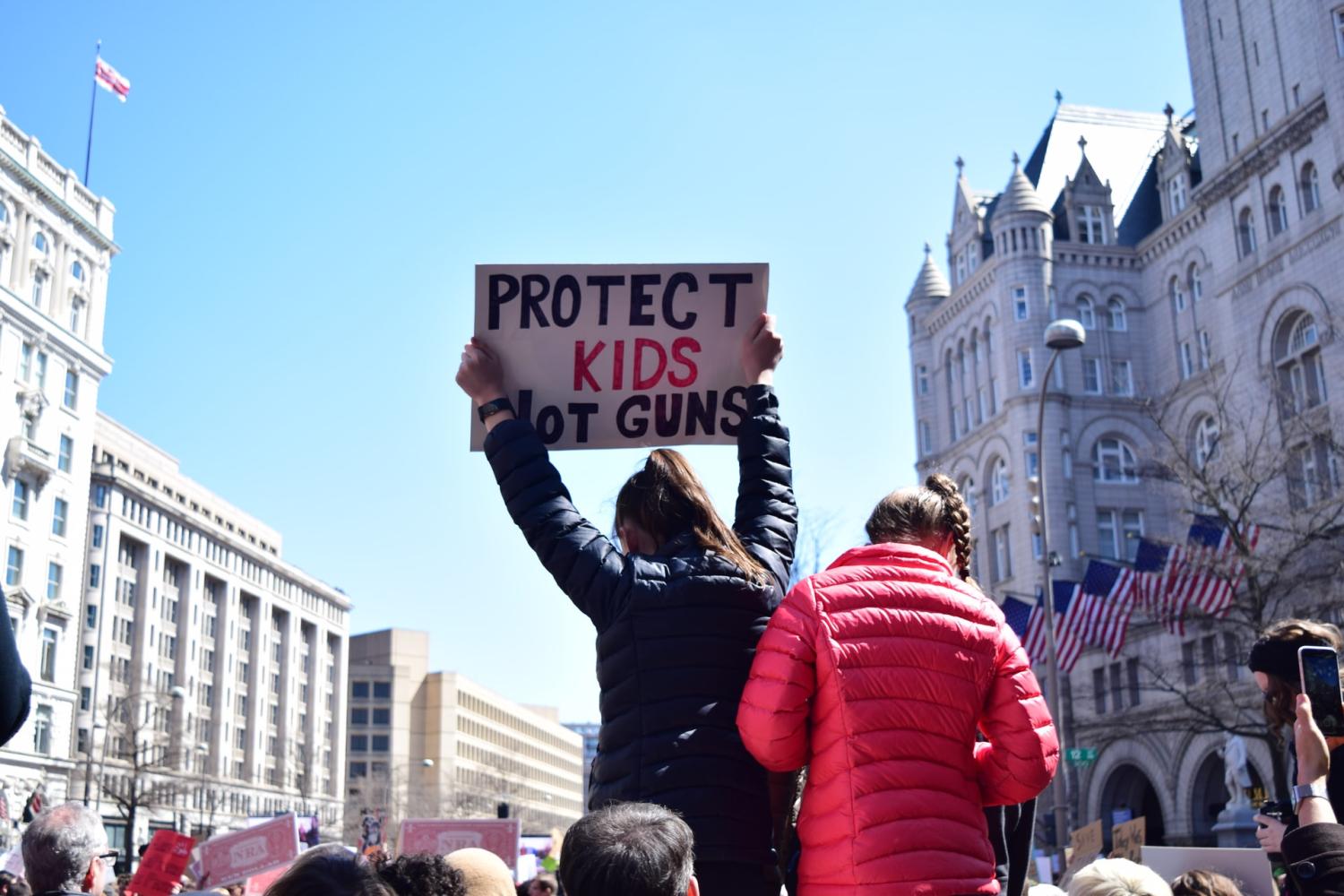
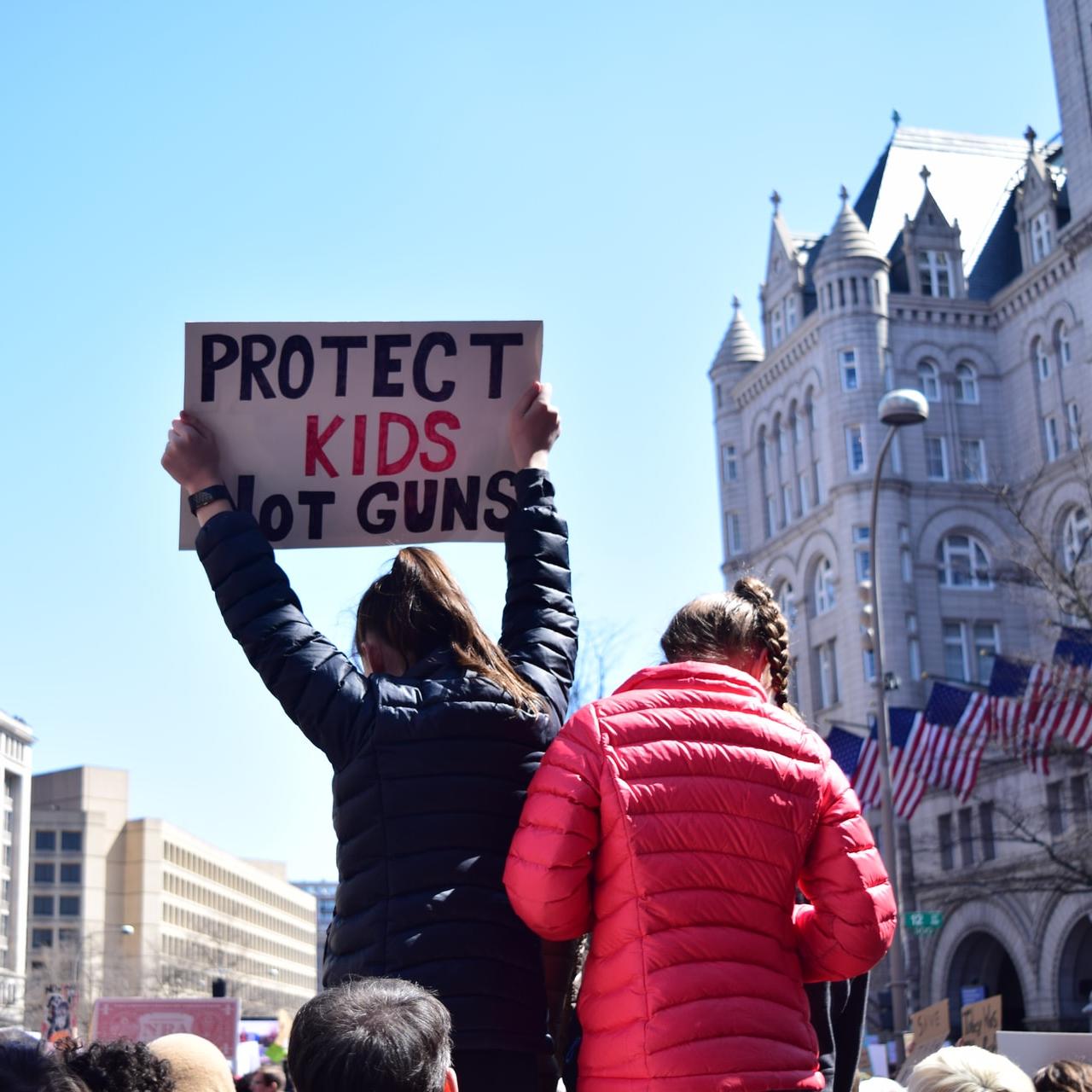
A 2018 March For Our Lives rally in Washington, D.C.
Top brands have long pussy-footed around the issue of gun violence in the U.S., and for good reason. A matrix of political power has steered the public conversation for a generation. Business leaders who speak out risk the wrath of elected officials, a gun lobby that supports them financially and a base of consumers for whom unrestricted gun ownership is a top voting priority. Now the gun taboo has finally cracked. The only missing link is an action step.
Public sentiment and the corporate voice
It may seem impossible to awaken the corporate voice on gun violence. However, consider the impact of grassroots social movements. Today it is commonplace for corporations to take a stand on issues that were once taboo. That includes pushing back against institutionalized oppression, such as the 2017 “Muslim ban,” the treatment of migrant children and the murder of George Floyd.
In the area of womens’ and LGBTQ+ rights, corporate support was virtually nonexistent just 40 years ago. Today, DEI (diversity, equality and inclusion) programs are a fixture among top corporations.
Breaking the taboo on gun violence
Corporations do face a powerful opponent in the National Rifle Association, despite the organization’s recent troubles. Gun control also does not have overwhelming support from voters. Public support for background checks and other measures runs high in surveys, but voters have prioritized other matters.
Nevertheless, some corporate leaders have taken a stand. It is no accident that the loudest corporate voices on gun violence in recent years have been Dick’s Sporting Goods, Levi-Strauss, Starbucks and other leading retailers, all of which face bottom-line impacts when their shoppers and employees are at risk.
This “shopper safety movement” was slow to gain traction until just days ago, in the aftermath of the Tops Supermarket massacre in Buffalo, New York on May 14 and the Robb Elementary School massacre in Uvalde, Texas on May 24. In both cases, the weapons were reported to be legally purchased by the shooters, both 18 years old.
Editor's note: Be sure to subscribe to our Brands Taking Stands newsletter, which comes out every Wednesday.
In response, the New York Yankees and the Tampa Bay Rays baseball franchises turned their entire Twitter feeds during game time on Thursday, May 26 into a running fact-check on gun violence. As the innings ticked by, the two teams spilled fact after fact about gun violence to their combined following of more than 4 million Twitter accounts, including media and other influencers as well as everyday fans.
It was a straightforward message: No-one is safe. Not at the supermarket, not at school, not at a house of worship, not at home, not at the local Little League field, and not, by extension, at a Major League Baseball game.
Providing the action step
The Rays also provided an action step. They encouraged their Twitter followers to donate to Everytown for Gun Safety, a gun safety organization that has steadily gained influence in coordination with Shannon Watts’s Moms Demand Action group. March for Our Lives, Students Demand Action and other groups have also added to the grassroots groundswell.
“¬We all deserve to be safe – in schools, grocery stores, places of worship, our neighborhoods, houses and America,” the Rays wrote.
“Everytown is the largest gun violence prevention organization in America,” they emphasized.
Jim Kerr, head coach of the Golden State Warriors has also deployed his high profile platform to advocate for the Brady gun safety organization.
Corporate leaders can also take a cue from San Francisco Giants manager Gabe Kapler. He deployed his lifestyle blog to explain and advocate for individual protest, similar to that of football star Colin Kaepernick’s 2018 protests against racism in policing.
Not the same old, same old on gun violence
It is fair to ask if the inexorable crush of the news cycle will bury all the outrage, as it has so many times before. However, this time around there is a crucial difference.
The pro-gun lobby has long touted security improvements and arming more “good guys” as the leading solutions to gun violence. The Buffalo and Uvalde massacres blew up both of those solutions to spectacular effect.
Tops Supermarket did have a security plan and a good guy with a gun, the heroic, newly retired police officer Aaron Salter, but he was no match for the firepower wielded by a teenager.
The Uvalde incident was an especially egregious failure at every level. The local school district reportedly had an extensive security plan in place and the good guys with guns showed up in force, but they failed to take action.
Next steps for common sense on gun safety
Naturally, the gun lobby will continue to point its finger at video games, mental illness, bullying, “woke” culture, absent fathers, critical race theory and every other available non-gun cause of gun violence. These social problems are also endemic in other nations; however, but no other country has a gun violence problem remotely close to what U.S. citizens endure again and again.
In reality, though, the destruction of the “good guys with guns” myth leaves the gun lobby with just one tool in its toolkit: the U.S. Constitution.
Corporate leaders need to understand where that argument came from in order to push back against it.
A common sense reading of the Second Amendment indicates room for reasonable safety regulations, just as there are reasonable restrictions on speech and assembly rights. However, in 2008 a pro-gun interpretation gathered traction in the conservative-majority U.S. Supreme Court.
As a result, the right to bear arms has become unmoored from matters of civic security. Even though the Second Amendment references “a well-regulated militia” and “the security of a free State,” the courts have set gun ownership adrift in the sphere of private behavior, where it has attained the status of a sacred patriotic duty.
The constitutional argument has been a powerful asset to the gun lobby in recent years. However, this time the constitutional waters have been muddied by happenstance.
As it happened, the Uvalde massacre took place in Texas, a state in which elected officials have worked diligently to restrict abortion rights. The hideous spectacle of a state machinery policing the human uterus while leaving actual children to die has underscored the absurdity of elevating gun rights to a sacred mantra at the expense of community welfare.
When taboos collide
The clash of taboos in Texas has already attracted notice from liberal activists. In an interview with Fortune executive editor Kristen Bellstrom published on May 27, law professor and author Anita Hill argued that “we need to understand the role that anti-woman thinking has had in school violence, mass murders, and other kinds of violent behavior.”
Meanwhile, some influencers on the conservative side of the aisle have gone into damage control mode.
In a May 26 interview with the Catholic publication The Pillar, Bishop Daniel Flores of Brownsville, Texas opened the door to a constitutional re-set on gun violence prevention when he questioned the insistence on “sacralizing” gun ownership above community welfare. Flores – who chairs the U.S. bishops’ committee on doctrine -- appeared to suggest that if any sacralizing is to be done, it can only be done by his organization, which espouses a hardline position on pregnancy rights.
Another crack in the constitutional armor came from the conservative actor, pregnancy rights opponent and outspoken Trump supporter Jon Voight. He posted a video on Facebook last Friday in which he issued a clarion call for universal background checks and training requirements, carefully couched in padding amenable to his 539,000 followers.
The longstanding taboo on naming guns as the cause of gun violence has finally cracked across the board. Conservative influencers appear willing to sacrifice the constitutional argument against gun control, in order to continue claiming the high ground on uterus control.
Corporate leaders can choose to take a back seat on this conversation, or they can stand up and help prevent the next preventable catastrophe.
Image credit: Tim Mudd via Unsplash
After Uvalde, Gabe Kapler Goes Where No One Else in Management Will Go


San Francisco Giants manager Gabe Kapler after his team completed a 5-2 victory over the Washington Nationals at in Washington D.C., April 23, 2022.
While the vast majority of leaders across the U.S. are offering little in the way of solutions and ideas after the massacre in Uvalde, Texas, other than “thoughts and prayers,” we can point to at least one person in a management role who’s speaking out and doing so loudly.
Last Friday, San Francisco Giants manager Gabe Kapler announced that he wouldn’t appear on the field for the U.S. national anthem until he “[feels] better about the direction of our country.” He did take a one-day break from his protest during his team's game on Memorial Day, but as of press time he's indicated that he will continue to take a stand on gun violence, in his own way. On his blog, he added:
“We elect our politicians to represent our interests. Immediately following this shooting, we were told we needed locked doors and armed teachers. We were given thoughts and prayers. We were told it could have been worse, and we just need love.”
With those words, he has put his reputation and long-term career prospects at risk, though as of press time he still has some of his peers in Major League Baseball offering support. His stance came a day after the Twitter feeds of the New York Yankees and Tampa Bay Rays posted facts about gun violence rather than game updates. Nevertheless, Kapler's move definitely made him the lone man on an island, or in the words of Tom Dart of the Guardian, "a liberal jock in America's most conservative league."
Editor's note: Be sure to subscribe to our Brands Taking Stands newsletter, which comes out every Wednesday.
A little background on Kapler: Before and during his middling pro baseball career, he was known more for his BMI (extremely low) than RBIs. So far, his career as a baseball manager has proven to be about the same. Though his teams in Philadelphia had improved compared to previous seasons, he didn’t exactly win over the Phillies’ fan base and was done after a couple of seasons. He did win manager of the year last season after the Giants cranked out a surprising season, but they lost to their rival Los Angeles Dodgers in the playoffs. Bottom line, his track record doesn’t remotely compare to revered baseball managers such as Joe Torre or Tony La Russa; the latter in particular has called out Kapler, saying while he supports the Giants' manager's sentiment, he also described Kapler's approach as "not appropriate."
Explaining his reasoning to avoid the field when the “Star Spangled Banner” is played — a sacrosanct tradition in professional baseball — Kapler explained moments of silence aren’t enough if we are to change our approach to gun safety in the land of the free and home of the brave, as he didn't hold back as he summed up the events in Uvalde:
“But we weren’t given bravery, and we aren’t free. The police on the scene put a mother in handcuffs as she begged them to go in and save her children. They blocked parents trying to organize to charge in to stop the shooter, including a father who learned his daughter was murdered while he argued with the cops. We aren’t free when politicians decide that the lobbyist and gun industries are more important than our children’s freedom to go to school without needing bulletproof backpacks and active shooter drills.”
This isn’t the first time Kapler has taken on the problem of violence in U.S. society, continuing what so far has been a solid track record of speaking up for those who often go unheard. He has run a foundation focused on taking on domestic violence. Currently, his work outside of baseball is to open up opportunities in sports to the LBGTQ community and people of color.
At a time when most business leaders are too spooked to take a stand on some of the most stubborn problems here in the U.S., even after the Uvalde massacre, Kapler has set the bar to what’s most likely and impossible height. Expect the personal attacks on him to continue unfettered on social media and news stories’ comments sections, not that many of the trolls would dare say anything to his face: Kapler, after all, is 6’2” with a BMI of 3.5 percent.
Image credit: All-Pro Reels via Wiki Commons
The U.S. Tire Industry Seeks to Better Understand and Mitigate Road Wear Particles
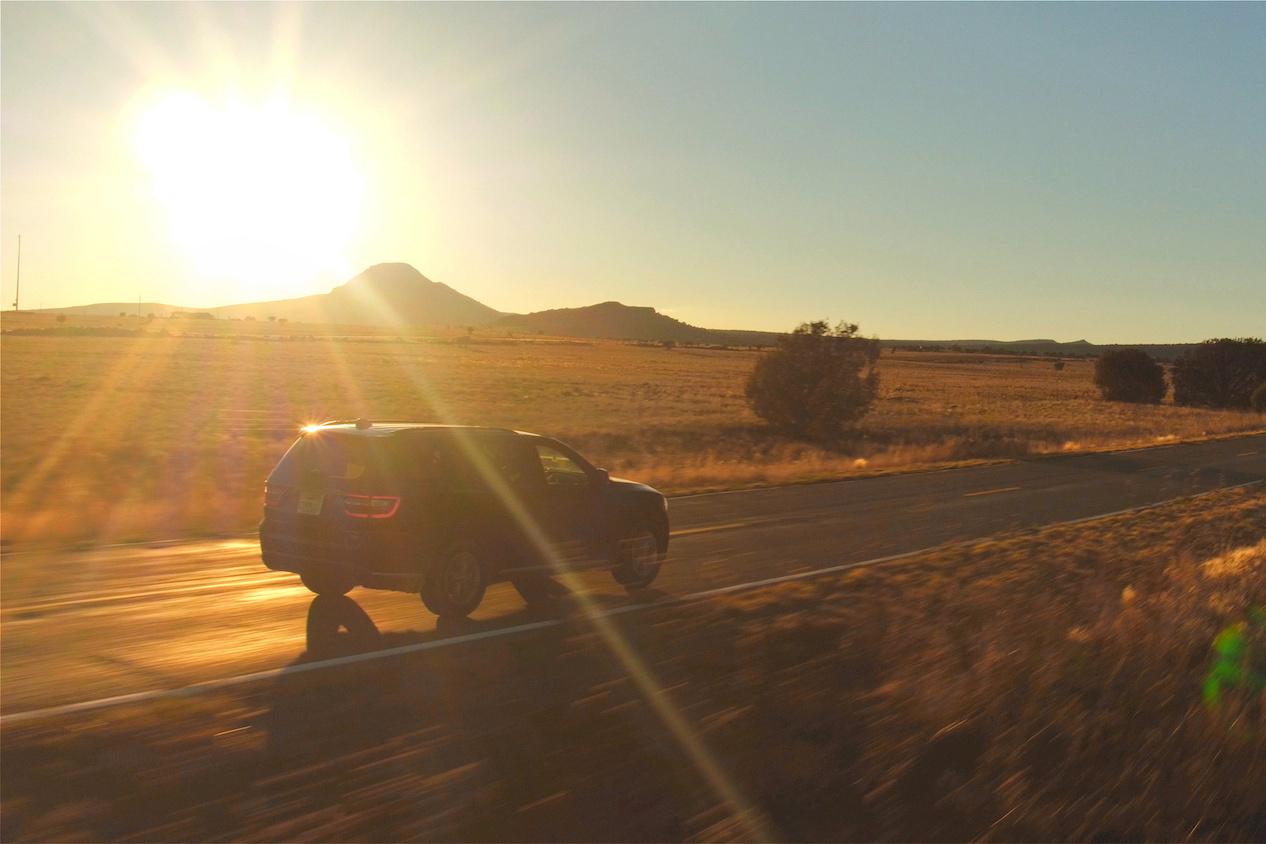

In addition to supporting a vehicle’s weight, absorbing impacts and withstanding weather conditions, tires are a car’s only connection to the road — and as such are essential to vehicle safety and performance. But that critical grip also leads to abrasion of both the tire and the road surface, producing tiny debris called tire and road wear particles, or TRWP.
As TriplePundit has previously reported in this series, public awareness of TRWP and their potential impact on the environment and human health is beginning to emerge. But as more information about TRWP has been learned, tire industry stakeholders — including the Tire Industry Project (TIP), a voluntary CEO-led sustainability collaboration under the umbrella of the World Business Council for Sustainable Development, and the U.S. Tire Manufacturers Association (USTMA), which represents tire companies in the United States — have ramped up efforts to better understand TRWP and mitigate their potential impacts.
“Sustainability directs USTMA member companies' business practices and operating principles,” said Anne Forristall Luke, president and CEO of USTMA. “As part of this, the industry supports additional and ongoing research on TRWP that considers the latest science.”
Existing research shows that TRWP have distinct characteristics. They are tiny, elongated particles comprised of approximately half tire tread material and half road pavement material, measuring less than 100 micrometers — which is about the size of fine-grained sand. Since 2005, tire industry stakeholders have supported independent, peer-reviewed scientific studies conducted by TIP to fill knowledge gaps about these particles. It has also built a public-facing website to provide a multimedia introduction to the topic of TRWP and a detailed account of the studies it has sponsored to date.
“TIP continues to sponsor and share research that uses cutting-edge methodologies for studying tire and road wear particles,” said Anne Cécile Rémont, the Director of TIP.
Researching the impact of tire and road wear particles (TRWP)
TIP has supported studies of TRWP in multiple environments, including freshwater systems, roadside soil, and ambient air. In freshwater environments, testing of recommended species showed low risk of toxicity under environmentally relevant conditions.
However, results of toxicity testing of tire-related particles by various researchers have been highly variable and depend on the test material used in the study, species tested, exposure concentrations, and endpoints evaluated, according to TIP and USTMA.
Low levels of TRWP were measured in airborne particulate matter from high-traffic locations in Europe, Japan and the U.S. Specifically, TIP-sponsored studies into airborne TRWP have concluded that TRWP have a relatively low contribution to particulate matter of the size fractions of most significance to human health. To date, TIP-sponsored toxicity studies of airborne TRWP demonstrate that human health risk related to short-term cardiopulmonary effects is low, although additional research is needed to understand risk from longer-term exposures, TIP and USTMA said.
TIP’s ongoing research includes extended scanning of TRWP presence in air, studying the degradation of TRWP in the environment, modeling TRWP fate and transport in environments such as air, rivers, soil, and oceans, and investigating the potential impact of long-term exposure to TRWP on organisms.
Stakeholders come together to solve research challenges
Understanding TRWP and their impacts is an ongoing subject of study that brings industry, academic and public-sector partners together — often with one novel discovery prompting a new wave of inquiry and testing.
For example, researchers at the University of Washington and the Washington Stormwater Center published findings in 2020 suggesting a connection between exposure to a chemical called 6PPD-Quinone and coho salmon mortality.
While 6PPD-Quinone is not used to make tires, the researchers discovered that 6PPD-Quinone may be created when the chemical 6PPD — an antioxidant and antiozonant that provides a key safety feature of preventing heat buildup inside tires — reacted with oxygen and ozone in the environment.
Although earlier studies of 6PPD and its transformation products had not identified 6PPD-Quinone, “the discovery in Washington led USTMA to act quickly, requesting that the California Department of Toxic Substances Control (DTSC) pursue an alternatives analysis to assess whether there is a safer alternative to 6PPD in tires under the state’s green chemistry regulations,” USTMA said.
USTMA also formed a global task force in collaboration with TIP and the European Tyre and Rubber Manufacturers Association (ETRMA) to identify relevant data gaps related to this newly discovered chemical. And it says it’s “actively engaging with other researchers and stakeholders” to fill those gaps and identify effective treatment solutions to mitigate 6PPD-Quinone in stormwater.
For example, the organization recently partnered with UC Berkeley's Greener Solutions Program, a project-based academic course supported by DTSC, the Washington Department of Ecology and the U.S. Environmental Protection Agency, where graduate students engaged in the study of possible alternatives to 6PPD that could ensure both tire safety and environmental protection. The USTMA also participates in working groups at the federal and state levels that are focused on identifying 6PPD-Quinone hot spots and pushing effective mitigation solutions forward.
Another key barrier to further TRWP research – which includes the study of 6PPD-Quinone – is that scientists face limitations in creating representative tire tread particles for accurate study.
To support researchers and their work, TIP created a methodology to produce cryogenically milled tire tread (CMTT) samples. These samples, created through a standardized laboratory process that grinds (or mills) tire tread, simulate tire particles that are normally generated by the friction between tires and road surfaces. This mix of tiny rubber pieces are representative of tire tread, but unlike TRWP, they do not contain elements arising from pavement or any interactions with pavement.
“CMTT is not a direct replacement for TRWP in TRWP-related studies, but it allows researchers to study the tire tread component,” Rémont explained.
There’s no one-size-fits-all solution to reduce tire wear
Many factors impact tire wear and the generation of TRWP — including tire design and vehicle characteristics like weight, distribution of load and location of driving wheels, as well as the type of road surface. Even things like weather and driving behavior can affect the production of TRWP. That means effective mitigation requires a collaborative, multi-stakeholder approach. Industry stakeholders are already looking toward innovations in tire design, as well as the automotive, road construction and infrastructure value chains, to mitigate TRWP.
For example, USTMA says its members are increasing the use of advanced compounds in tire tread, which helps to improve vehicle fuel efficiency leading to fuel savings, reduced vehicle CO2 emissions, and better tire wear performance.
Incorporating sustainable infrastructure in roadway development can also provide long-term solutions for reducing TRWP. Specifically, USTMA is encouraged by the documented benefits of rubber-modified asphalt (RMA), an innovative paving material made from asphalt and ground end-of-life tires that has been shown to reduce tire wear by up to 50 percent. RMA also presents another potential opportunity to support a circular economy for tires.
The Ray — a nonprofit pursuing net-zero roadway solutions on an 18-mile stretch of interstate highway in Georgia — recently partnered with USTMA and the University of Missouri to study rubber-modified asphalt. Along with installing the material on a one-mile stretch of the test highway, the study reviewed more than 300 scholarly sources and surveyed 26 state highway agencies — and it found the material to be a promising circular solution that repurposes scrap tires, cuts the carbon footprint of road construction, and reduces tire wear, among other benefits.
Green infrastructure, such as stormwater infiltration galleries and rain gardens (also known as bioswales), has also proven effective in reducing the impact of potential pollutants and TRWP. For example, the San Francisco Estuary Institute found that microparticles were well captured by rain gardens, reducing microplastics in stormwater runoff by 91 percent. Stormwater infiltration galleries made with tire-derived aggregate have also been found to reduce stormwater pollutants and runoff.
Finally, motorists can also help reduce the amount of TRWP produced by maintaining proper tire pressure and not driving aggressively. USTMA recommends that consumers check their tire pressure at least monthly to ensure proper inflation, which can also provide the added benefit of increased fuel efficiency.
“Understanding any potential impacts of TRWP and solving for those is key to our sustainability strategy as we remain committed to reducing our environmental footprint and providing safe, high-performing products,” Forristall Luke of USTMA added.
This article series is sponsored by the Tire Industry Project and produced by the TriplePundit editorial team. Members of the Tire Industry Project (in alphabetical order) are Bridgestone, Continental, Goodyear, Hankook, Kumho Tire, Michelin, Pirelli, Sumitomo Rubber, Toyo Tires, and Yokohama Rubber.
Image credit: helivideo/Adobe Stock
Applying DEI to Customer Service Ensures Hospitality for All


As discussed in the first article of this two-part series, cancel culture and “woke” branding can be difficult for entrepreneurs to navigate. In this second article, we will dig deeper with Alison Tedford — a DEI consultant, disability advocate and the author of Stay Woke, Not Broke — as she explains how being woke in business is not about politics. It’s about hospitality.
The idea that the customer is always right has been a staple of the service industry for so long that the average customer today does not remember a time without it. And while it was a novel idea at one point in the previous century, it is now so ingrained as to have become a point of contention between service workers and those customers who expect everything to go their way all of the time. This notion of customer service puts many businesses in a position of playing clean-up instead of being proactive. Entire departments are dedicated to placating upset customers while DEI is given little more than lip service in many organizations. But what if there was an upgrade?
What Tedford suggests applies the idea of DEI to all aspects of business in a way that creates a culture of inclusion for customers and employees alike. And while this won’t eliminate the inevitable entitled customer that appears now and again, because hospitality will be better all around, the business will have an easier time attracting clients with shared values.
The idea is to always present the most universally comfortable situation without assuming to know how to best meet an individual’s needs. In practice, this mitigates many needs for accommodation and thus the feelings of discomfort that customers and employees experience from having to ask for them. An example Tedford gives is of setting up a hypothetical retreat for clients, being proactive about accessibility and eliminating venues with things like bunk beds. Doing so makes the environment more comfortable for everyone — whether they use a mobility device, have an invisible disability like neuropathy that would make it hard to climb a ladder, are scared of heights, sprain their ankle over the course of their stay or simply don’t want the discomfort of being stuck on the top bunk.
Does that mean no one will possibly need an accommodation? Of course not. It’s about making the best effort, not being able to meet everyone’s needs all of the time without anyone ever having to ask. In fact, asking the customer or employee what they need from the start can eliminate potential faux pas from false assumptions. For example, Tedford relayed her own experience of attending a music festival and being asked to leave a space that was closing. When she explained that she needed to remain due to a disability, she was directed to the elevator. The issue wasn’t mobility, however. The workers failed to meet her needs because they had assumed they knew what she needed without asking her. By asking instead of assuming they could have found her a place away from the crowd where she wouldn’t be in pain from being jostled.
Tedford encourages small business owners to, in Tedford’s words, “Create a culture with a level of safety so people can ask for change.” She explained that sometimes people don’t know why they need a particular accommodation, they may not have a diagnosis, but they do know what they need and it is important to listen to them.
That culture of safety is just as important when it comes to communication and technology. “Ask people what they need. How do you learn best? What is the best way to communicate?”
Website accessibility is easy for many entrepreneurs to overlook if they are not proactive about it. Tedford encourages small businesses to extend the idea of inclusion-based hospitality to websites by paying attention to formatting. Video and audio should be captioned and transcribed. Alternative text should be provided to explain pictures or graphs since screen readers cannot interpret them. Dyslexia-friendly fonts can be used to create a more inclusive experience.
Diverse organizations are able to be more successful by virtue of having a greater range of perspectives, ideas and solutions. By applying DEI to customer service models, businesses can create a more inclusive environment that capitalizes on providing the best experiences for all while attracting customers, partners and employees with shared values.
Image credit: Vishnu R Nair via Unsplash
A DEI Consultancy That Urges Clients to Go Beyond Token PR and CSR
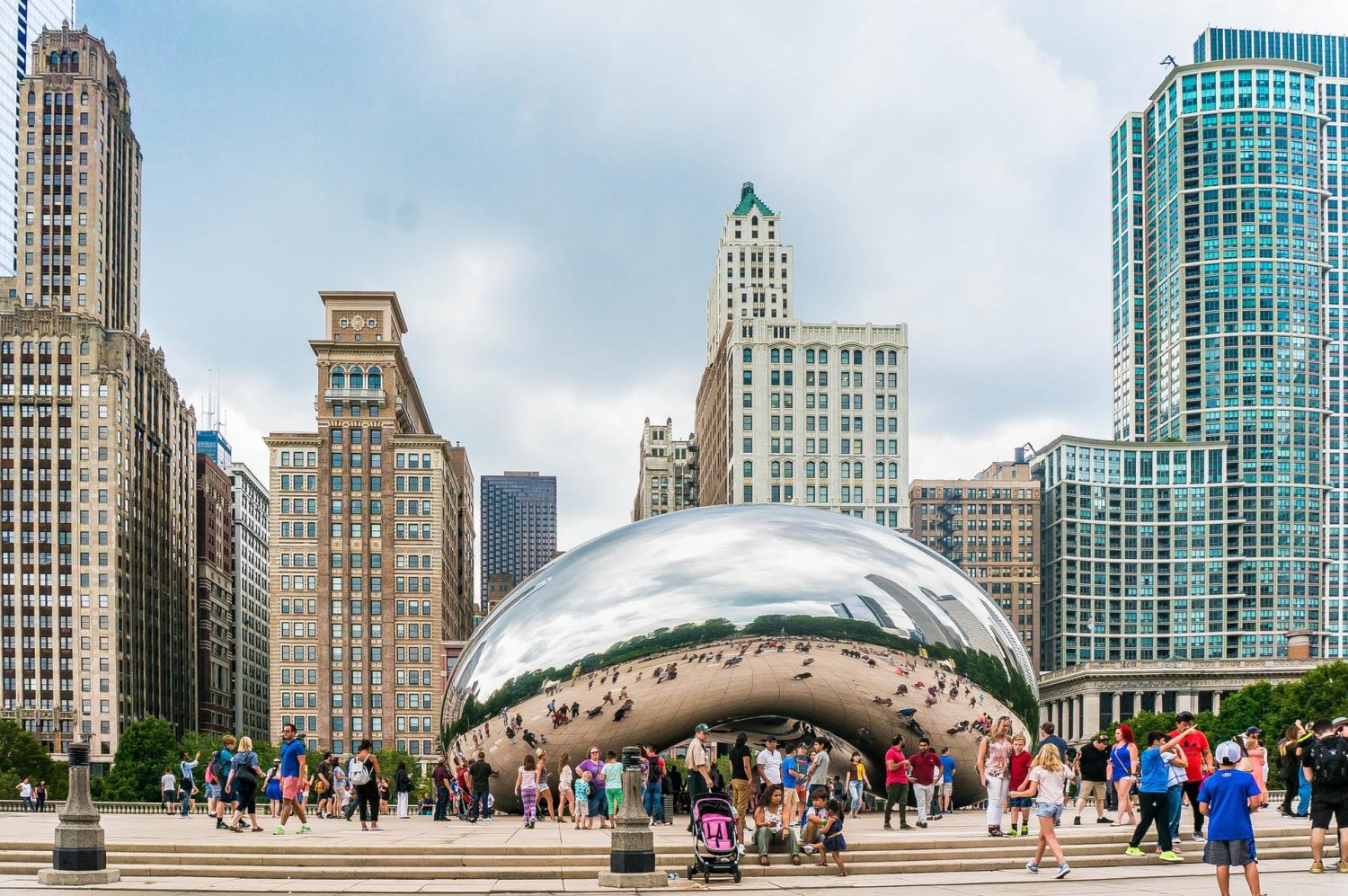
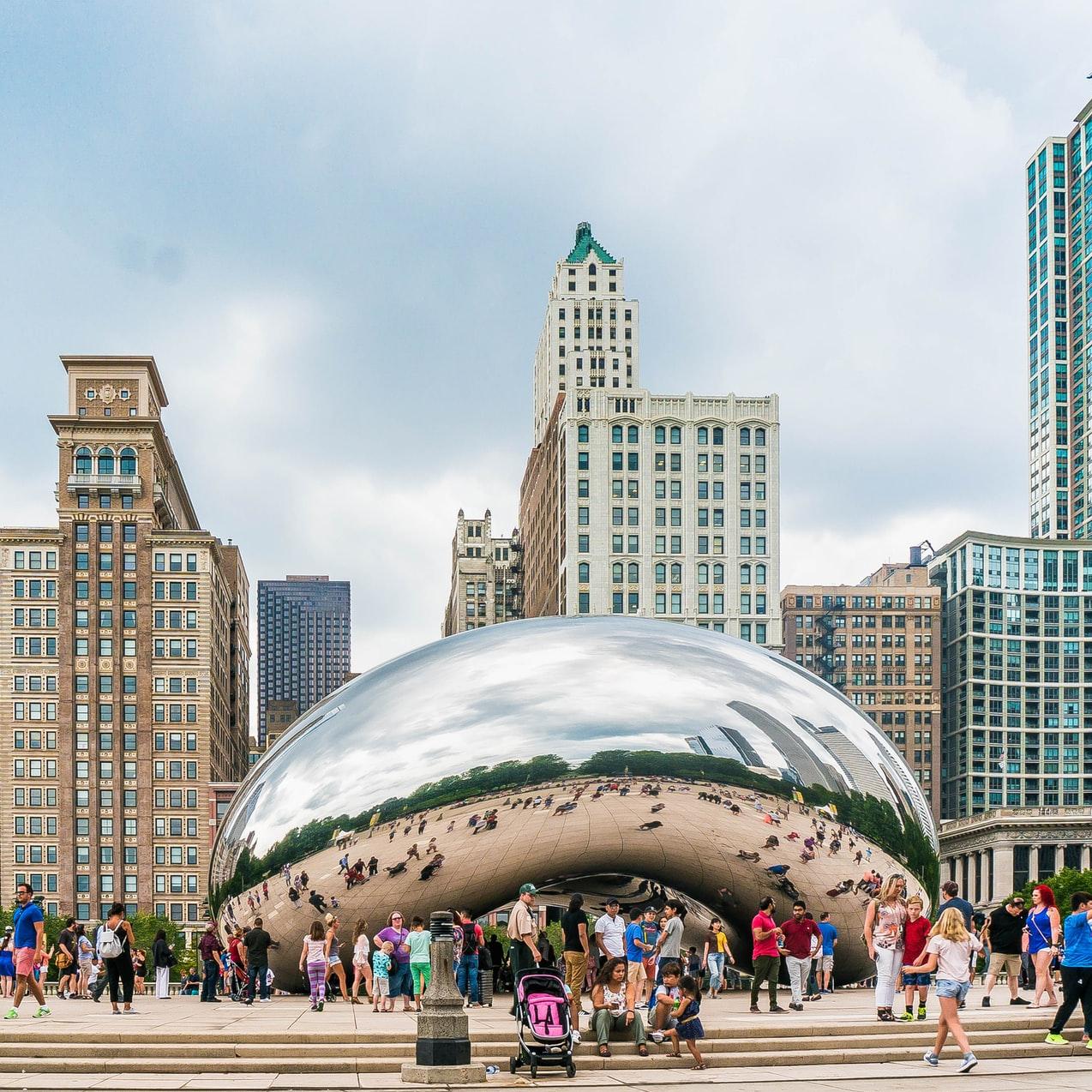
Justice Informed (JI) is a social impact consulting firm located in Chicago, Illinois, which offers four strategic service areas: diversity, equity and inclusion (DEI); community engagement and strategic planning; public policy-informed corporate social responsibility (CSR); and equity-focused philanthropy.
According to Xavier Ramey, the CEO and founder of JI, in the alphabet soup that is environment, social and corporate governance (ESG), DEI and CSR, there are weak links within each element that represent a common problem: “difficulty measuring outcomes.”
In terms of progress and impact of the three, according to Ramey, “what can be measured is what gets done.” This accounts for what might be lacking in some programs in a particular area.
“Over the last several years, what I see [when] negotiating with Fortune 500 global executive teams to mid-size companies, is that until things are sufficiently measurable, they’re just going to do what is,” Ramey said. “It proves they are doing something, which is still progress.”
The philosophy behind the JI methodology is to take a micro approach to problem-solving, going beneath the obvious. They make the vowels and consonants in these common acronyms — as in “E” and “S” — more meaningful and attainable for each company in ways that can be quantified.
For example, the “E” (equity) in DEI is a subjective noun open for some interpretation. It doesn’t necessarily reflect only pay or promotion, but an intangible that almost speaks more to employee satisfaction, fairness and opportunity than numbers and percentages: How many employees of color are groomed and selected for management training, versus how many employees of color are in management.
The “S” (social) in ESG and CSR is mostly defined in terms representing a relationship of the corporation or workforce with the surrounding community, with the definition of that relationship being determined randomly some number or policy statement.
Ramey spoke to TriplePundit about an actual social program where “a company set up a fund to help pay bails, fines and fees for those who find themselves secondarily punished by poverty, and driven deeper into the criminal justice system as a result of not having the funds to make payments.” Most of those were people of color.
“Informed” speaks to the strategic thought and planning that goes into sculpting and leading a corporation to a successful social and environmental program where the word “equity,” means much more than being equal.
Ramey added, for example, that “philanthropic equity includes a donation of time, money or product to a community program that provides fruits and vegetables to a neighborhood that wouldn’t otherwise have access."
JI would guide a company toward making an informed decision as to what the goal is and addressing a need in ways that can be observed and quantified.
“In the political arena,” Ramey noted, “if the goal is to shrink the size of government, we should concentrate on reducing the burden of government by paying a living wage.”
“When people are not paid a living wage, costly government programs often fill in the gaps.”
Beyond its work on DEI initiatives, JI also specializes in workforce and anti-poverty strategies, including housing, education, employment, and financial empowerment programs.
“Our work is one part structural and systemic, economic and sociological. But the other side of our work is therapeutic,” said Ramey. “Our client mantra is we support people as they thrash into discovering groups they did not know they were not choosing.”
Clients include the University of Chicago, Northwestern University, Health Care Services Corp (HCSC) and Mercer; each of them has launched an individually adapted plan.
“Social progress requires a bit of pioneering, and the pioneer often takes the hit of the first wave, and the first wave hits the hardest,” said Ramey. “ESG is the front of the wave right now, and, for the most part, measurable. We only usually get the types of clients who are interested in being on the front of the wave. I have to remind them not to ask me ‘what are best practices.’ There are no best practices, only new practices.”
Image credit: Richard Tao via Unsplash
Washington State’s Wine Industry Confronts Climate Change Risks
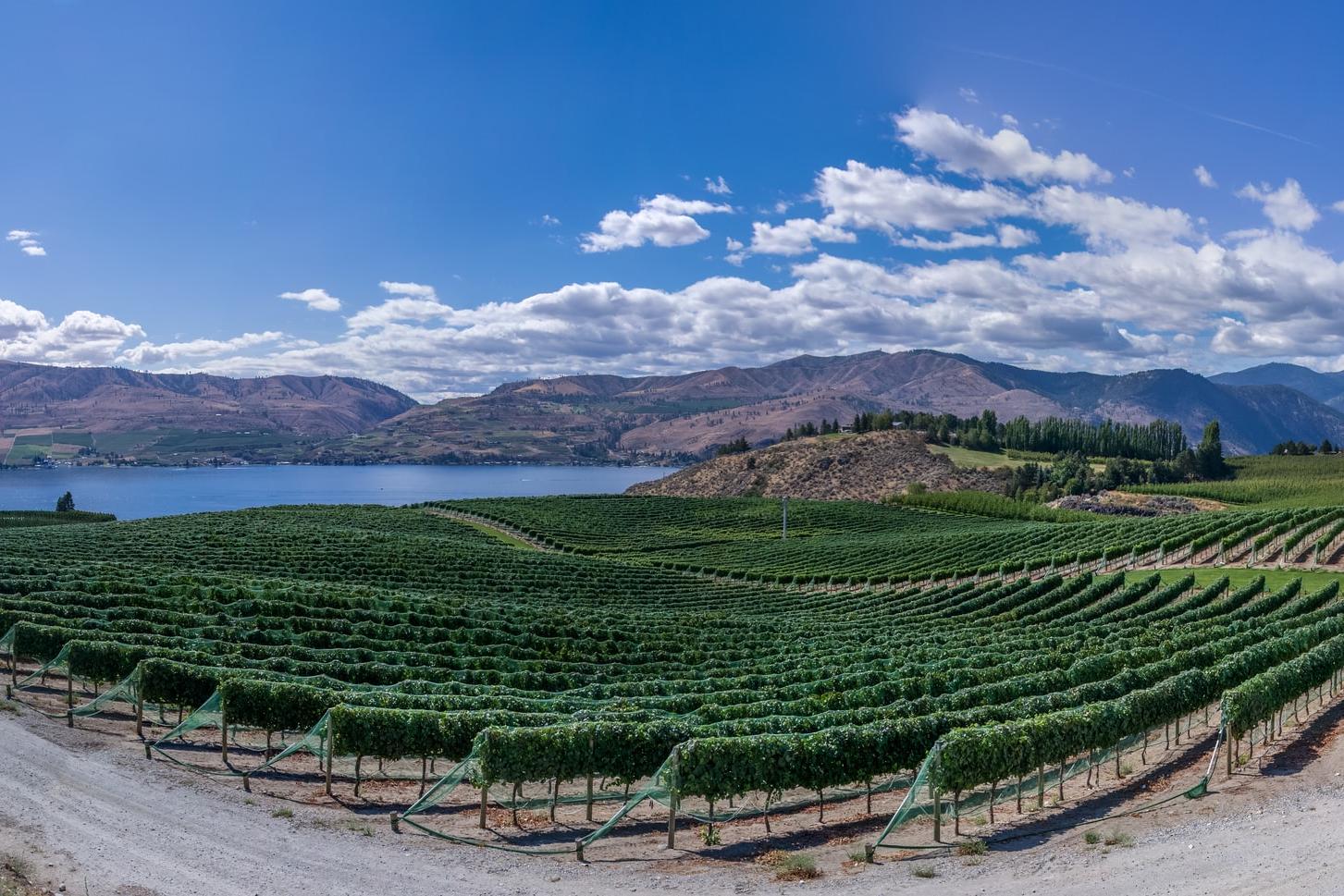
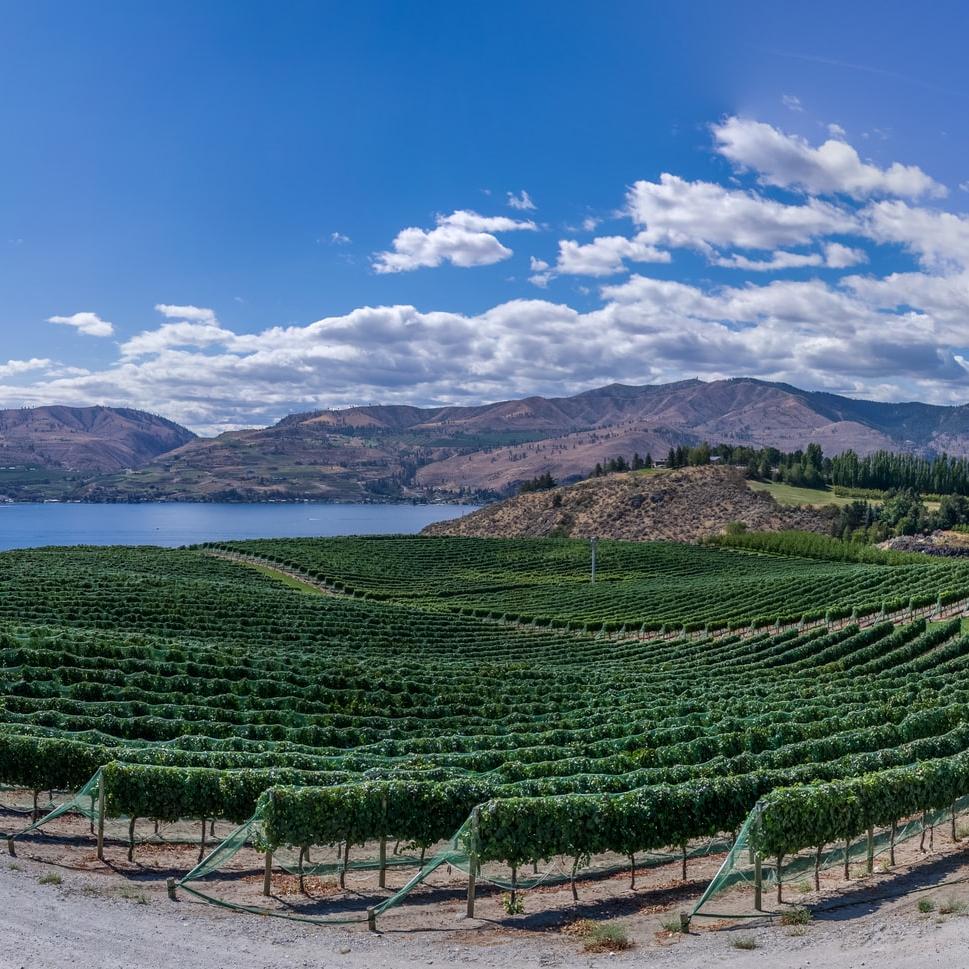
A winery located on Lake Chelan in north-central Washington state.
The state of Washington’s wine industry faces an increasingly grim fate at the hands of climate change. Winemakers must evolve to combat changes brought forth by global warming or go extinct if they’re not willing to adapt. But now, there’s a glimmer of hope for the Washington wine business.
Sustainable WA, Washington’s first state-wide wine grape sustainability program, is making strides to ensure the survival of the industry. Conceived over the span of 20 years, the program is a collaboration between Washington winegrowers, the Washington State Wine Commission, the Washington Wine Industry Foundation and the Washington Wine Institute with a commitment to “quality fruit, environmental stewardship, and healthy communities.” The program aims to certify vineyards as “sustainable” as early as this summer.
Sustainable WA-certified vineyards must commit to using sustainable viticultural practices and pass a third-party audit to ensure quality operational standards, with additional audits every three years. Sustainable WA’s program manager, Katlyn Slone, hopes that in doing so, the organizations’ stakeholders are promoting the message of continued advancement, not just a one-and-done solution.
Qualifying vineyards and wineries are able to don the Sustainable WA logo on their wine labels to signify their grape certification. From this coalition’s point of view, it is imperative for Washington winemakers to join this movement, not only for the survival of their vineyards, but for their spot in the increasingly competitive “sustainably” branded global marketplace, as well.
Washington is the second highest wine-producing state behind California, producing about 10 percent of U.S. wines. In 2021, the state had almost 60,000 acres of vineyard land according to the Washington Winegrowers Association, most of which is watered by runoff from the Cascade Mountains.
Rising temperatures triggered by climate change are causing snowpack to melt faster, pushing more mountain water into vineyards earlier in the growing season than in previous years. Conversely, because excess water drains so much earlier, there is none left to supply vineyards within the summer months.
In 2021, Washington Governor Jay Inslee declared a drought emergency from these effects. In addition to parching the vineyards, the excess heat also sunburns the grapes and encourages pest infestations. Today, vineyards are getting on average 30 percent less water than 50 years ago.
Water is not the only element have an impact on vineyards — west coast wildfires are destroying the quality of more sensitive wine grapes. Although Washington winemakers say that wildfire smoke currently affects only a small portion of grapes, it still is a concern for some grape varieties that are more prone to permeation, rendering those wines unsellable. Furthermore, when there is oppressive heat or wildfire smoke, vineyard workers aren’t able to spend as much time grooming and tending to the vines.
The future of wine making in an era of climate change will require even more precision than already necessary. Wine grapes must be matched with the correct climates, temperatures, moistures and soil types to properly grow. Even minimal deviants from these norms can have a major impact on the quality of the grapes, and therefore, wine.
Previously, winemakers were able to tailor their care to the needs of their grapes, but with climate change rapidly affecting the industry, it’s anyone’s guess what alterations will be needed to produce satisfactory grapes. This could even force vintners to choose different grapes altogether that are better suited to grow in warmer climates.
Experimentation isn’t just inevitable, it’s essential. If winemakers aren’t up to the task of growing, there likely won’t be a place for them in Washington state’s wine landscape. Sustainable WA is working diligently to ensure the industry’s survival and continued production of quality, sustainable, and healthy grapes for generation to come.
Image credit: Sergei A via Unsplash
A Memorial Day Message from 3p


We here at TriplePundit are not publishing today, Memorial Day, as we feel it’s important to remember what this day has been about since the late 1860s — remembering and mourning U.S. military personnel who lost their lives while serving in the country’s armed forces.
So, we’d be remiss if we didn’t at least offer a few suggestions on how to remember those who lost their lives, their families — and for veterans of past armed conflicts.
Operation Second Chance
This Maryland-based nonprofit that offers a bevy of services to military families, starting with financial assistance for families affected by troops who are injured while on military duty. Help includes funds for rent or mortgage payments, utility bills, childcare or transport costs for family members who need to visit loved ones who are hospitalized.
Honor Flight Network
Since 2005, the Honor Flight Network has been sending World War II, Korean War and now, Vietnam War veterans to Washington, D.C. so that they can share memories with other veterans from across the U.S.; during their visit to D.C., they also have the opportunity to visit monuments so they can remember the friends they had lost.
3p’s editor, Leon Kaye, has two uncles, one a WWII vet, the other who experienced combat in Korea, who together experienced this opportunity in 2017 while both were in their late 80s. All the veterans’ experiences are fully paid for; donations can be made to a local chapter or the national Honor Flight foundation.
Canine love and support for vets
It goes without saying that a loyal friend can help mend one’s pain: That’s certainly true of dogs and what they can do for veterans. K9s for Warriors is the largest nationwide provider of service dogs for U.S. vets; Puppies Behind Bars (PBB) works with incarcerated people so that they can help raise and train service dogs for war vets and first responders.
Image credit: Chad Madden via Unsplash
For Small Businesses, DEI is About Growth


More than ever, business leaders are coming to appreciate the importance of taking a stand on important social issues. On the other hand, “woke” branding also runs the risk of alienating consumers — especially when it comes across as inauthentic or opportunistic. But entrepreneurs can broaden their reach and deepen their social impact by weaving their values into the core of their businesses — that is, according to disability advocate, author and DEI (diversity, inclusion and equity) consultant Alison Tedford. What’s more, by being genuine and proactive, these entrepreneurs can avoid the trappings of scandal and “cancel culture.”
Tedford previously spent ten years working in government on policy solutions surrounding inclusion and has since transferred her skills to the private sector, where she helps small business owners incorporate their own values into their brands. With her new book launched in April — Stay Woke, Not Broke — Tedford aims to create a learning environment where “It’s not about guilt, it’s about growth.”
This means breaking things down to the bare bones and making sure that every aspect of a business measures up with the values that an entrepreneur hopes to integrate. In practice, that involves looking at everything from how services are delivered to whether price points are accessible in order to be more inclusive.
There are potentially uncomfortable questions that need to be asked during this process, such as: “How do you work with diverse groups? How do you serve them? How do you adjust?” These questions give entrepreneurs an opportunity to reflect on why their message might not be landing and reconsider their language. After all, for branding based on values to be effective, it has to be authentic, even transformative.
Editor's note: Be sure to subscribe to our Brands Taking Stands newsletter, which comes out every Wednesday.
“It isn’t about repackaging anything,” says Tedford. “It’s about honoring what exists and presenting opportunities for growth.” Growth is a resounding theme in her work — through which she aims to provide a framework that helps businesses avoid potential scandals.
So, what advice does she have for businesses that may have slipped up and fear the wrath of cancel culture? First, take responsibility and issue a clear apology centered on those who were hurt, not on one’s own feelings. Careless apologies do run the risk of worsening consumer backlash, and while a multinational corporation might not face dire consequences, small businesses have more to lose from blame-shifting, excuses and other apologies that really aren’t. Second, identify what went wrong and how the business will do better going forward. Be transparent about what steps will be taken. Consult with people who can give inside insight into a particular group or community and how it is affected by the scandal. Tedford encourages entrepreneurs to compensate those who offer their time and insight — “Don’t expect people to teach you for free.”
Sometimes, a business can summon cancel culture just by how it responds to a scandal or issue in the larger culture — as Pepsi demonstrated several years ago with its ad featuring Kendall Jenner. The beverage giant would have been better off staying out of the issue altogether than risking such heartless messaging. For small businesses, taking a stand can feel like a big risk regardless of how well-crafted the message is. Tedford advises her clients to focus on what is important to them and what they specifically want clients or employees to be aware of so that everyone is on the same page. She encourages brands to take a stand if the issue is in their geographic area or if their services will be impacted. “Otherwise,” she says, “pass the mic. There’s no need to rush into every fire.”
Tedford wants small business owners to know that just because their company is not Apple or Google that it doesn’t mean that it's too soon to start taking DEI seriously in their organization. Even sole proprietorships can benefit from choosing to integrate their values from the bottom up, just as consumers further commit to purchasing according to their own principles. A commitment to DEI is a commitment to growth.
In the next article of this two-part series, Tedford shares how to create a culture of inclusion by applying DEI to hospitality.
Image credit: Humphrey Muleba via Unsplash
Turns out, Immigrants Do Have a Large Role in Securing a Sustainable Economy
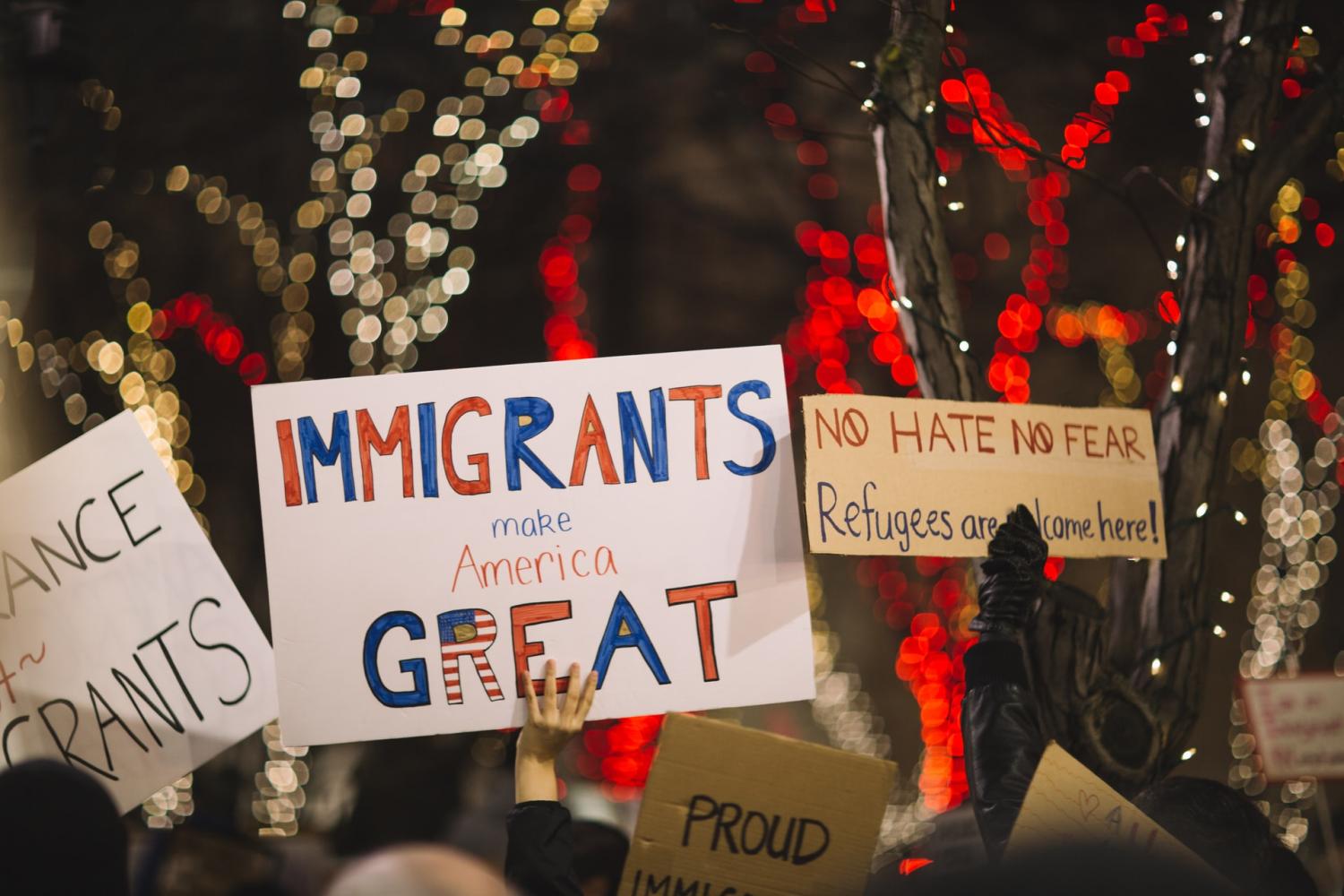
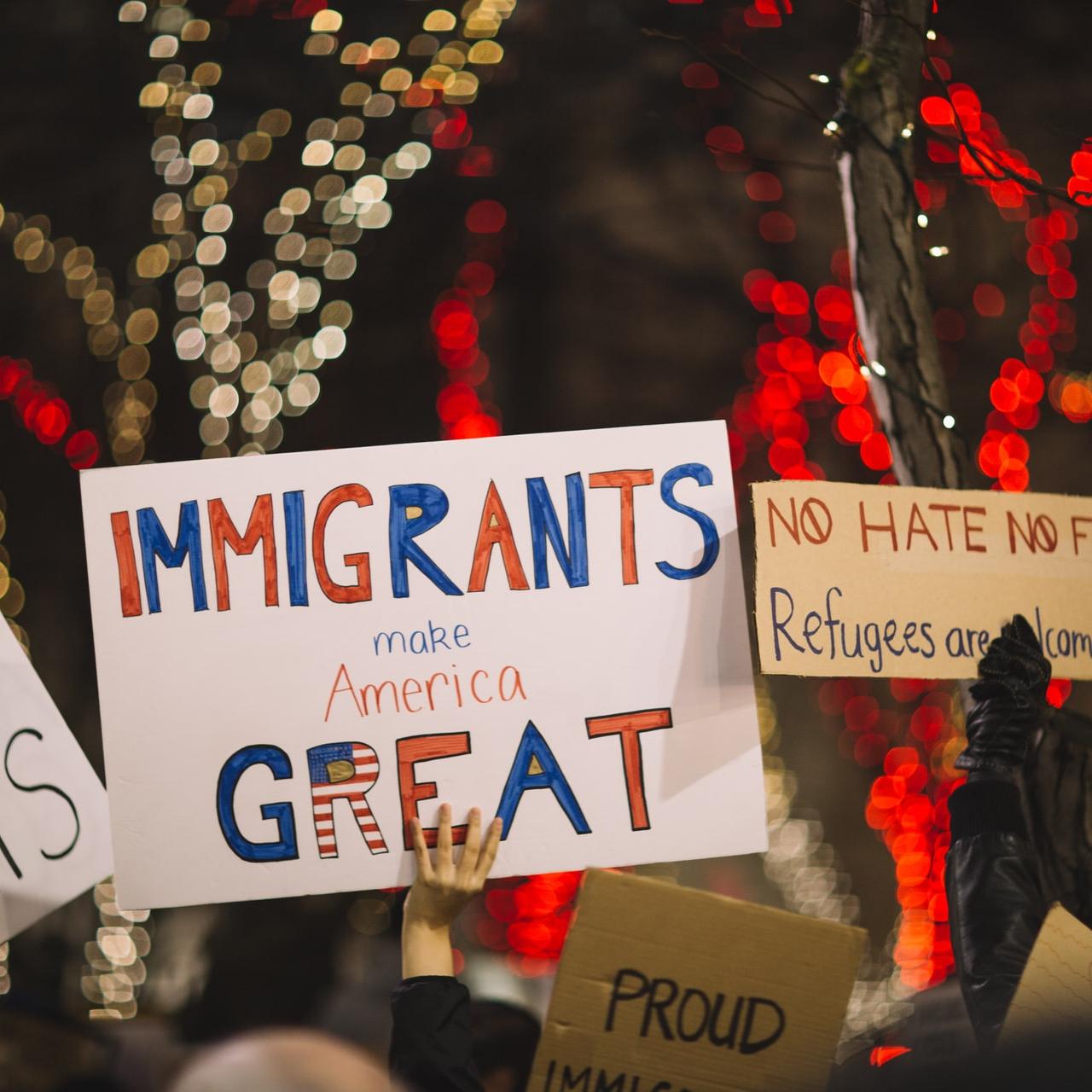
Data released recently by the American Immigration Council underscore the crucial role immigrants play in the U.S. economy and how continued immigration will help address ongoing labor shortages while creating a more stable and sustainable economy during the next decade.
The Council’s report analyzes how the demand for various occupations across the U.S. labor market have changed since before the COVID-19 pandemic and which occupations are expected to increase by 2030.
Employing data from the Bureau of Labor Statistics (BLS), the American Community Survey, and the labor market analytics firm Burning Glass, the report assesses shifts in the labor market since before the start of the pandemic, determines which occupations will experience increased demand, and analyzes the role of immigrant workers within occupations that will have the highest growth potential during the next decade.
“Our findings reveal that not only are the most in-demand jobs now expected to continue to outpace the supply of available labor in the near term, but by 2030 millions of additional workers will be needed to fill new jobs and those vacated by retiring workers,” said Andrew Lim, a research director at the American Immigration Council, in a public statement. “While young people entering the workforce will fill many jobs, the gap between the demand and a diminishing supply of U.S.-born workers suggest that more workers will need to come from abroad to make up for the shortfall — or these positions will go unfilled.”
Immigrants don’t disrupt or harm the economy — they stabilize it
While the COVID-19 pandemic resulted in huge disruptions to the U.S. labor market, the Council’s research found that immigrants have been a stabilizing force, as they often filled openings in essential occupations while meeting some of the demand in rapidly growing fields, Lim noted.
The stubbornly tight labor market has left open jobs unfilled at a steadily increasing rate. Of the 165 million U.S. jobs expected to exist in 2030, nearly half — or about 80 million — will be vacated by people retiring, changing careers or exiting the labor market altogether, according to the report. Meanwhile the occupations that grew the most between 2019 to 2021 were the ones with large representation by immigrants.
Further, job growth patterns during the next decade are likely to be remarkably different from those that unfolded during the COVID-19 crisis, the report concludes.
A need stretching beyond ‘essential workers’
Although many of those future jobs will be filled by people who due to their age will start their own transitions into the workforce, demographic trends cited in the Council’s report suggest that the U.S. labor market in 2030 will still have an excess of vacant positions. Baby boomers will be rapidly sunsetting from the workforce, and the numbers suggest that the population of Gen Z, despite this generation’s growing presence in the job market, will not be enough to fill in those gaps. That’s where immigrants come in.
While almost all occupational groups saw an increase in job postings, the job categories that witnessed the most dramatic growth between 2019 and 2021 were those society considered as “essential” during the pandemic. This includes healthcare practitioners and healthcare support workers as well as other roles considered vital to the basic functioning of modern society, such as in transportation, food preparation, construction and manufacturing.
According to data cited in the report, immigrants currently make up almost 14 percent of the U.S. population, but are disproportionately represented in several “essential" job categories. Such occupations include health care practitioners (16 percent), transportation (19 percent), engineering (20 percent), personal care (20 percent), food preparation (21 percent), manufacturing (22 percent), health care support (22 percent), computer and mathematical jobs (25 percent), and construction (28 percent). Immigrants are even more represented in healthcare occupations, as nearly a third of physicians and 1 in 5 lab technicians in the U.S. are foreign-born.
A changing job market still faces stiff opposition to immigration
The data show that many fields vital to the growth and stability of the U.S. economy rely on immigrant professionals today — and will continue to rely on them in the future. But that does not mean it will be smooth sailing for qualified immigrants who seek opportunities in the U.S.—and definitely not for the organizations that seek to hire them.
The skunk at the picnic are the negative feelings about immigration among a sizable minority of U.S. citizens. Anti-immigrant rhetoric is percolating more and more as the 2022 midterm elections approach, with survey data from earlier this month suggesting that one in three U.S. adults believe an effort is underway to replace U.S.-born Americans with immigrants for electoral gains. Roughly 3 in 10 also expressed concern that more immigration is causing U.S.-born Americans to lose their economic, political and cultural influence, according to the poll conducted by the Associated Press-NORC Center for Public Affairs Research. Republicans are more likely than Democrats to fear a loss of influence due to immigration by a ratio of 36 percent to 27 percent. Considering the polarized climate in the U.S., that is not a huge gap, and it reveals how prevalent resistance to immigration is among a sizable part of the U.S. population.
Still, two-thirds of those surveyed in the same AP-NORC poll believe that the nation’s increasingly diverse population makes for a stronger country, and far more favor than oppose a path to legal status for immigrants brought into the country illegally as children. Nevertheless, the greatest anxieties about changing demographics in the U.S. are among people who are more likely to engage in or promote conspiracy theories about immigration — even though the data make it clear that the U.S. will need immigrants to fill the copious number of jobs expected to open during the 2020s.
Image credit: Nitish Meena via Unsplash